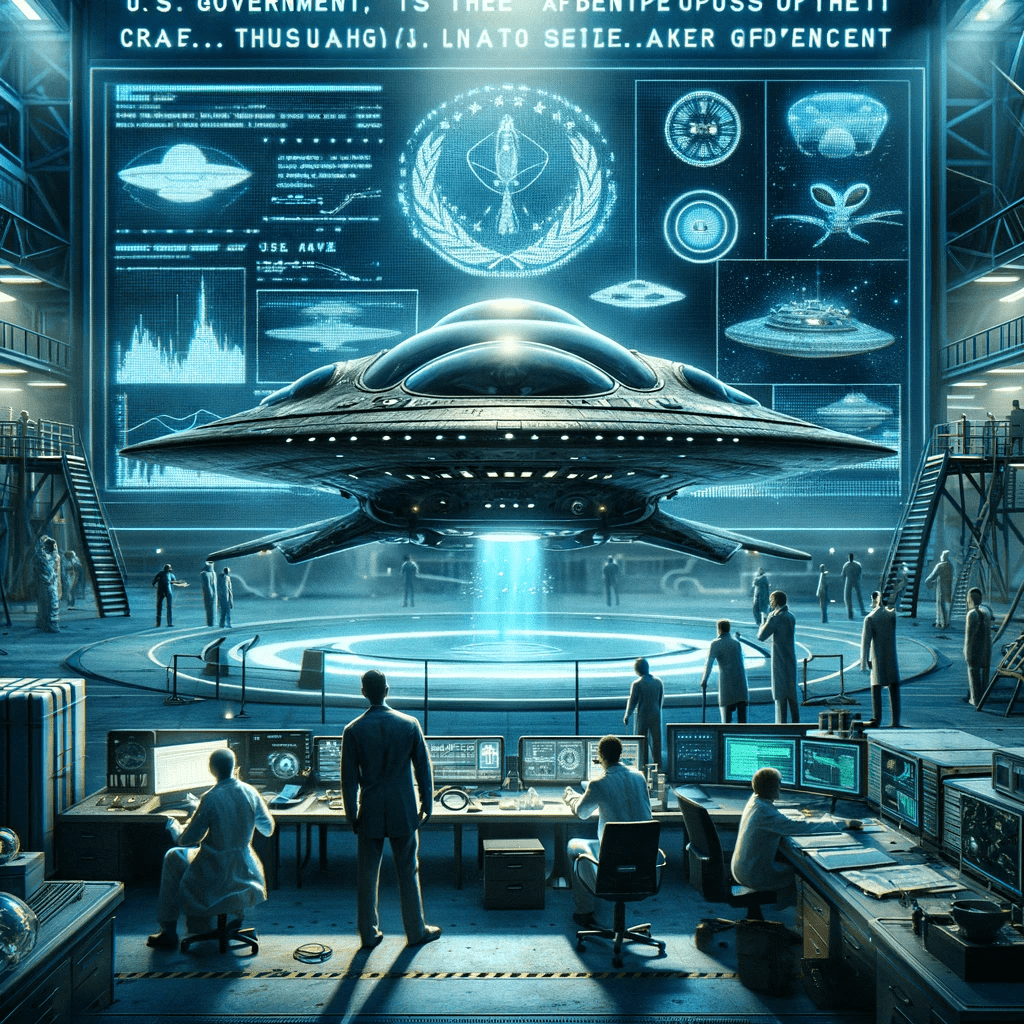Former Head of UFO Research Program Claims U.S. Government Holds Alien Craft

In a recently published book, co-written by James Lacatski, the former leader of the Advanced Aerospace Weapon System Applications Program (AAWSAP) dedicated to Unidentified Aerial Phenomena (UAP) research, new insights about his time with the program and evidence supporting extraterrestrial technology are disclosed.
Lacatski stated that the U.S. government has an alien craft in its custody and has been examining its design and capabilities. “We have acquired a craft that wasn’t made by human hands, and we’ve gained insights into its interior and functionalities,” he mentioned.
Although Dr. Lacatski did not provide specifics about the craft’s origins, appearance, or the knowledge gained from it, he did say that he is restricted by a confidentiality agreement and that too much disclosure could jeopardize national security. However, he hinted that the craft shares features commonly seen in other UAP sightings reported to the program, such as high-speed movements, exceptional agility, and advanced propulsion mechanisms.
The latest book titled “Inside the U.S. Government Covert UFO Program: Initial Revelations,” is co-authored by James T. Lacatski, D.Eng., Colm A. Kelleher, Ph.D., and George Knapp. Published by RTMA, LLC in Henderson, Nevada, it promises to offer new insights into the covert operations surrounding UFO research and the U.S. Government’s involvement. Given Lacatski’s background and previous disclosures, this book provides a deeper understanding of this highly secretive area.
The book extends gratitude to Robert Bigelow and Senator Harry Reid, indicating that their contributions were essential for the project or research to take place. Their involvement is deemed so significant that the authors suggest none of it would have happened without them.
The book is a comprehensive examination of the Advanced Aerospace Weapon System Applications Program (AAWSAP) and its research on Unidentified Aerial Phenomena (UAPs). Beginning with an overview of AAWSAP, it looks into various aspects of the program, including its management plan and the physics behind its projects. It outlines specific topics such as UAP propulsion and power generation. The book also explores individual events and case studies, including encounters with military aircraft and incidents at nuclear missile bases. Collaborative efforts between AAWSAP and the Mutual UFO Network (MUFON) are covered, along with the program’s broader research goals and its data repository. A section on Skinwalker Ranch events and analyses involving various layers of UAP information are also included. Finally, the book looks to the future, outlining potential next steps in this field of research. With appendices that provide even more technical details, this publication aims to offer a complete look at the complex subject of UAPs and their implications.
Who Is Dr. James T. Lacatski, Former AAWSAP Program Manager?
James T. Lacatski, D. Eng., was the Program Manager for the Advanced Aerospace Weapon System Applications Program (AAWSAP) at the Defense Intelligence Agency (DIA). He is also known as a Ph.D. rocket scientist who has worked for the Department of Defense (DOD).
Born on January 9, 1951, his full name is James Thomas Lacatski. He is also a co-author of a new book about Skinwalker Ranch, titled “Skinwalkers at the Pentagon: An Insiders’ Account of the Secret Government UFO Program.”
Lacatski is believed to be the primary source of information for Sen. Harry Reid. Reid has expressed concerns about the possibility of Russia and China advancing in UAP technology. By May 2009, Reid was alarmed that the U.S. was lagging behind in the development and understanding of technology based on UAPs.
It’s speculated that a senior scientist at the DIA, like Lacatski, could be Reid’s source for this concern. Although Reid initially claimed that Lockheed Skunkworks was also in possession of UAP materials, he later withdrew that statement.
In June 2004, Lacatski attended a U.K. conference on “Ballistic Missile Defence” as an Intelligence Officer for Missile Defense at the DIA. He received a promotion to GG-14 within the DIA in January 2005 and was named the Contracting Officer’s Representative (COR) and government project leader for a DIA solicitation in August 2008. By April 2009, DIA’s internal magazine featured Lacatski commemorating his ten years of Federal service.
Dr. Lacatski is highly regarded for his contributions to aerospace technology, particularly in the field of UAP research. Under his direction, the AAWSAP program achieved significant progress, including:
- Creating an extensive database of UAP encounters: The team gathered data from both military and civilian reports, which was essential for identifying recurring patterns and directing subsequent investigations.
- Furthering research into groundbreaking propulsion systems: Lacatski’s deep knowledge in advanced propulsion enabled the team to explore unique means of propulsion, such as anti-gravity.
- Investigating new methods of energy generation: Inspired by the advanced technology seen in UAPs, the program also probed into inventive ways to produce energy.
The recently published book co-authored by Dr. James T. Lacatski serves as a substantial addition to the field of Unidentified Aerial Phenomena (UAP) research. As the former leader of the Advanced Aerospace Weapon System Applications Program (AAWSAP), Lacatski provides unprecedented insights into the U.S. government’s covert involvement with extraterrestrial technologies. While Lacatski’s statements are bound by confidentiality, his assertion that the government has a non-human craft in its possession signals a profound revelation. The book, enriched by the involvement of key figures like Robert Bigelow and Senator Harry Reid, offers a multidimensional look into various facets of AAWSAP—from its management and scientific underpinnings to case studies and future research directions. Lacatski, a well-respected figure in aerospace technology, was instrumental in advancing our understanding of UAPs and their technological implications. His influence extends to policymakers like Senator Harry Reid, heightening the sense of urgency in this domain. Overall, this book emerges as a critical resource for those seeking a nuanced understanding of the state’s involvement in one of the most enigmatic subjects of our time.


